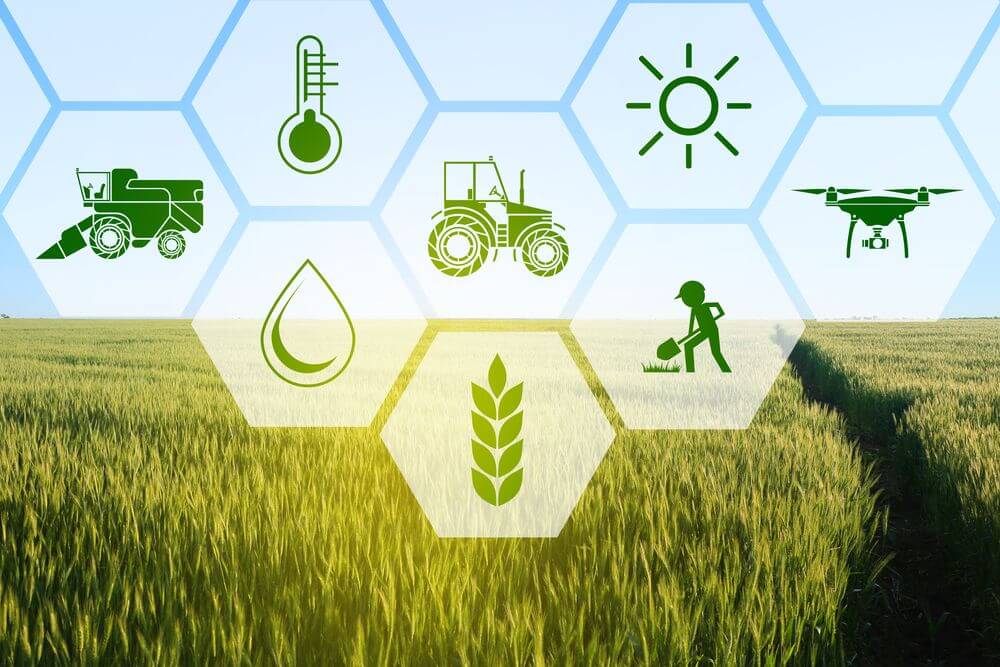The recent Farm Sector budget announcement has created mixed feelings in agriculture from India sector. While some see it as a forward-looking and innovative step towards revitalizing the agricultural economy, others, notably farmers’ leader Rakesh Tikait, see it as an “empty” gesture that lacks meaningful support for farmers. This reception dichotomy highlights the complex and diverse needs of the industry. In this article, we delve into the nuances of the budget, its perceived benefits and criticisms.
1. Positive outlook: A Vision of Modern Agriculture
The budget took several measures to modernize agriculture, improve infrastructure and ensure sustainable growth. These initiatives have been praised for their potential to transform the agricultural landscape.
Technology Integration and Innovation
One of the most praised aspects of the budget is the focus on technology integration. The government plans to allocate significant funds for the development of agricultural technology (Aggrotech). This includes promoting digital platforms for farmers, using drones for crop assessment and adopting precision farming techniques.
These technological advances are expected to increase productivity, reduce costs and provide farmers with real-time information to make informed decisions. The emphasis on innovation reflects a forward-looking approach aimed at bringing Indian agriculture up to global standards.
Development of infrastructure
Another positive aspect is the important investment in rural infrastructure. The budget outlines plan to improve rural roads, irrigation systems and warehouses. Better infrastructure is critical to reducing post-harvest losses and ensuring that farmers can transport their produce efficiently.
Expanding cold storage and warehouses is particularly important. These improvements are expected to help stabilize prices and reduce wastage of perishable goods, benefiting both farmers and consumers.

2. Financial Support and Access to Credit
Several measures were proposed in the budget to increase financial support and credit for farmers. This includes expanding credit facilities and introducing new insurance schemes to protect farmers against natural disasters and price fluctuations.
Expansion of credit- The government aims to increase the availability of credit to farmers through various schemes and financial institutions. By making it easier to get a loan, the budget aims to enable farmers to invest in better seeds, fertilizers and equipment that will ultimately increase productivity.
Insurance Schemes- New insurance schemes have been introduced to provide a safety net to farmers. These schemes are designed to protect crops from crop failure due to adverse weather conditions and ensure that farmers are not left in poverty during a crisis.
3. Sustainable Practices and Environmental Aspects
The budget strongly emphasizes sustainable agricultural practices. This includes initiatives to promote organic farming, reduce the use of chemical fertilizers and encourage water conservation.
Organic Farming
Supporting organic farming is key. The budget provides for subsidies and incentives for farmers adopting organic farming practices. This measure aims to promote healthier food production and maintain soil health.
Water Conservation
Water protection measures are also in the focus of attention. The budget includes funds for the development of efficient irrigation systems and the promotion of water-saving technologies. These initiatives are crucial in a country where water scarcity is a major concern for farmers.

4. Criticism: Tikait’s ‘Empty-Handed’ Verdict
Despite the many positive aspects of the budget, it was sharply criticized by many sides, especially by the leader of farmers Rakesh Tikait. Tikait called the budget an “empty hand”, arguing that it does not address the fundamental problems facing farmers.
Lack of Direct Income Support
One of the most important objections is the lack of direct income support for farmers. Critics say that while the budget focuses on long-term infrastructure and technology improvements, it ignores the immediate financial needs of poor farmers struggling with mounting debt.
Minimum Support Price (MSP)
Another contentious issue is the ambiguity of the Minimum Support Price (MSP). Farmers demanded a legal guarantee of MSP to ensure a fair price for their produce. However, the budget does not provide concrete means to fulfil this demand, which causes frustration among farmers.
Implementation Concerns
The implementation of the proposed measures also raises concerns. Critics say that while ambitious plans are presented in the budget, it is not clear how these initiatives will be implemented in practice. Without effective implementation, the benefits of the budget may not reach the intended beneficiaries.
5. The Way Forward: Bridging the Gap in Farm Sector
The mixed reactions to the budget highlight the need for a balanced approach that addresses both the immediate and long-term needs of the agricultural sector. While the government’s investment in modernization and sustainability is commendable, it must also ensure that farmers receive adequate financial support and a fair price for their produce.
Dialogue and Collaboration- Constructive dialogue between government and farmer representatives is essential. By involving farmers in the decision-making process, the government can gain valuable knowledge and address farmers’ concerns more effectively.
Monitoring and Evaluation- Effective monitoring and evaluation mechanisms must be established to ensure the successful implementation of the proposed initiatives. Regular reviews can help identify problems and make necessary changes to improve budget performance.
Comprehensive Policy Framework- A comprehensive policy framework that links short-term aid measures to long-term development goals is essential. This framework should include provisions for direct revenue support, legal safeguards for seabed planning, and robust mechanisms for implementing and monitoring budget initiatives.
Conclusion
The recent budget has sparked a complex debate in the agricultural sector that reflects the diverse needs and challenges of farmers. While it offers a forward-looking vision that focuses on technology, infrastructure and sustainability, it falls short of addressing some of the pressing issues facing the farming community. By fostering dialogue, effective implementation and adopting a comprehensive policy framework, the government can bridge the gap and create a more inclusive and supportive environment for Indian farmers.
Check out the following for more information!
- NDTV: Farmers’ Reactions to the 2024 Budget on ndtv.com
- The Economic Times: Agriculture Budget 2024 Highlights on economictimes.indiatimes.com
You may also like-


Nicely written